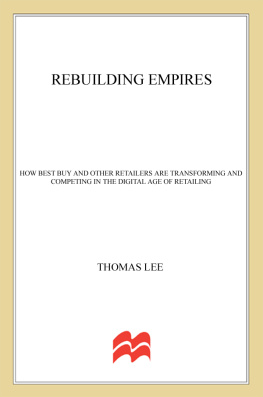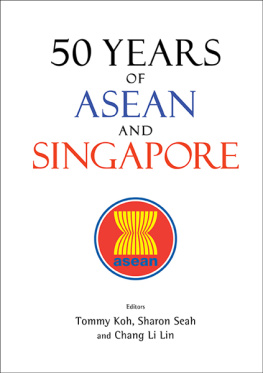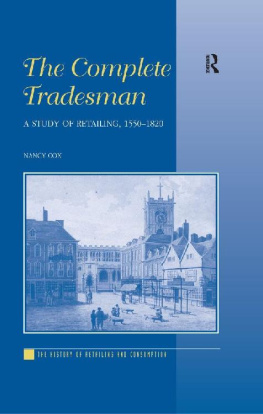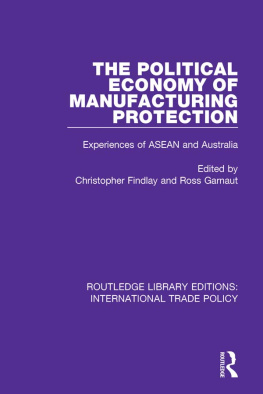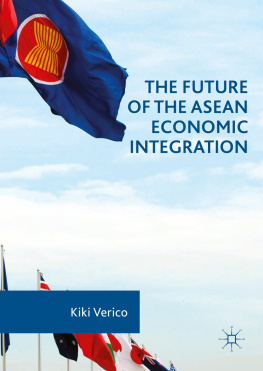Ha Huong - Consumer Protection in E-Retailing in ASEAN
Here you can read online Ha Huong - Consumer Protection in E-Retailing in ASEAN full text of the book (entire story) in english for free. Download pdf and epub, get meaning, cover and reviews about this ebook. year: 2021, publisher: Business Expert Press, genre: Romance novel. Description of the work, (preface) as well as reviews are available. Best literature library LitArk.com created for fans of good reading and offers a wide selection of genres:
Romance novel
Science fiction
Adventure
Detective
Science
History
Home and family
Prose
Art
Politics
Computer
Non-fiction
Religion
Business
Children
Humor
Choose a favorite category and find really read worthwhile books. Enjoy immersion in the world of imagination, feel the emotions of the characters or learn something new for yourself, make an fascinating discovery.
- Book:Consumer Protection in E-Retailing in ASEAN
- Author:
- Publisher:Business Expert Press
- Genre:
- Year:2021
- Rating:3 / 5
- Favourites:Add to favourites
- Your mark:
- 60
- 1
- 2
- 3
- 4
- 5
Consumer Protection in E-Retailing in ASEAN: summary, description and annotation
We offer to read an annotation, description, summary or preface (depends on what the author of the book "Consumer Protection in E-Retailing in ASEAN" wrote himself). If you haven't found the necessary information about the book — write in the comments, we will try to find it.
Ha Huong: author's other books
Who wrote Consumer Protection in E-Retailing in ASEAN? Find out the surname, the name of the author of the book and a list of all author's works by series.
Consumer Protection in E-Retailing in ASEAN — read online for free the complete book (whole text) full work
Below is the text of the book, divided by pages. System saving the place of the last page read, allows you to conveniently read the book "Consumer Protection in E-Retailing in ASEAN" online for free, without having to search again every time where you left off. Put a bookmark, and you can go to the page where you finished reading at any time.
Font size:
Interval:
Bookmark:

Consumer Protection in E-Retailing in ASEAN
Consumer Protection in E-Retailing in ASEAN
Huong Ha

Consumer Protection in E-Retailing in ASEAN
Copyright Business Expert Press, LLC, 2021.
Cover design by Charlene Kronstedt
Interior design by Exeter Premedia Services Private Ltd., Chennai, India
All rights reserved. No part of this publication may be reproduced, stored in a retrieval system, or transmitted in any form or by any meanselectronic, mechanical, photocopy, recording, or any other except for brief quotations, not to exceed 400 words, without the prior permission of the publisher.
First published in 2021 by
Business Expert Press, LLC
222 East 46th Street, New York, NY 10017
www.businessexpertpress.com
ISBN-13: 978-1-95334-960-6 (paperback)
ISBN-13: 978-1-95334-961-3 (e-book)
Business Expert Press Business Law and Corporate Risk Management Collection
Collection ISSN: 2333-6722 (print)
Collection ISSN: 2333-6730 (electronic)
First edition: 2021
10 9 8 7 6 5 4 3 2 1
Description
While many sectors and industries have been badly affected by the COVID-19 pandemic, e-retailing is one of the booming sectors during this period. Even before the global pandemic, the e-retailing sector was already booming with the online retail sales being forecasted to reach several trillions by 2023. Although e-retailing offers many opportunities for businesses and consumers, there are several issues associated with e-consumer protection, that is, consumers face various types of risk, such as insufficient information about transactions, unsecured online payment modes, privacy and security, inaccessible redress mechanism, goods not delivered, or defective goods received.
This book aims to examine how consumers are protected on the online marketplace in the context of ASEAN countries, and what are the challenges of e-consumer protection in the digital era. Specifically, this project aims to:
(i) Discuss the six issues of e-consumer protection, including issues associated with information about transaction, product quality, privacy, security, redress, and jurisdiction.
(ii) Examine the policy/governance approach adopted by the public sector, the private sector, and the third sector to address the issues associated with e-consumer protection.
(iii) Propose a multisector governance framework for e-consumer protection.
Three short case studies on Lazada in Singapore, Shopee in Vietnam, and Zalora in Malaysia are included to illustrate how well-known e-retailers protect their e-customers. This book aims to provide sources of information and knowledge which focus on both theoretical and practical aspects of e-consumer protection. The book is significant for the following reasons. First, it is interdisciplinary in nature, including research on consumer protection, governance, management, and policy/regulation. Second, the views from different groups of stakeholders in different sectors are incorporated in the discussion in order to produce comprehensive findings and analysis of the governance and management process, best practices, and implementation to address issues associated with e-consumer protection. Finally, the proposed book presents research on e-consumer protection in different countries in ASEAN.
Keywords
e-consumer protection; multisector governance; e-retailing; e-retailers; industry association; information disclosure; self-regulation; privacy; security; redress; jurisdiction; ASEAN
Contents
In 2006, I bought a new motorcycle for U.S.$10,000, sight unseen except on the Internet, by credit card purchase from a dealer I had never visited located in a city 2,420 miles from my home. I hadnt ridden a motorcycle in 33 years and it was a dangerous thing to do. The main danger lay in the e-retailing transaction rather than the cross-country motorcycle trip that followed. This was my first experience of substantial magnitude with e-commerce.
So much could have gone wrong. I had no basis for judging whether the dealer was honest or might use my credit card information for nefarious purposes. Perhaps, the information would be taken by hackers to run up a number of purchases before the credit card was shut down. Knowing that I would be away from home, the dealer, near the U.S. west coast, could have targeted my empty house for burglary by accomplices on the east coast. He could have given or sold my credit card information to others and I could have become a victim of identity theft. He might have withheld knowledge that the motorcycle had significant defects or claimed that it did and charged me for (un)necessary repairs. Because the motorcycle was from Japan I might have had no recourse. The defects could have occurred in manufacturing, in shipping, or at the dealers shop during assembly and preparation. Even if all went well, which it did, I might still have been disappointed because the Internet information I used in deciding to buy the motorcycle was false or misleading.
E-retailing has come a long way since 2006. Its benefits to consumersconvenience, choice, price, and the ease of comparing multiple sellersare substantial and enable some e-retailers, such as Amazon in the United States, to thrive almost beyond imagination. E-retailing also promotes local, regional, and national economic growth, though often at a significant cost to brick and mortar commerce. But many of the pitfalls remain similar. The old aphorism, Never buy a pig in a poke, is still apt. When making e-retail purchases, consumers cannot use their five senses as they might in assessing products in a conventional store or marketplace. They cannot try on our out what they are buying. Neither can they make personal assessments of the sellers honesty the way they might in face-to-face interactions with them. Caveat emptor remains critical.
The main purpose of this wonderfully informative and insightful book is to improve e-retailing, especially from the consumers perspectives. Much of the focus is on ASEAN nations, which provides very valuable comparative analysis. The book consists of six succinct, yet comprehensive chapters including an introduction and conclusion. These cover the overall issues associated with e-consumer protection, the current governance framework for e-consumer protection, a proposed governance framework for e-consumer protection, and three case studies drawn on experiences in Singapore, Vietnam, and Malaysia followed by a conclusion drawing the entire book together.
introduces the subject matter by defining e-retailing and outlining its advantages and disadvantages, e-consumer rights and protections, and governance for e-consumer protection.
discusses the main problems associated with e-retailing. These include deceptive advertising, guarantee and warranty, unauthorized billing, late or non-delivery of products, wrong product delivery, shipping costs, poor quality of products and services, unclear price and payment, unclear terms and conditions, lack of information about redress, misleading information, security and privacy along with refunds, exchanges, and other redress, especially in cross- border transactions under different legal regimes. Additionally, as the chapter explains there are the collateral risks posed by exposure of personal and financial information by sophisticated schemes for phishing, pharming, smishing, vishing, breaching privacy, spam, spim, spyware, and the like.
Font size:
Interval:
Bookmark:
Similar books «Consumer Protection in E-Retailing in ASEAN»
Look at similar books to Consumer Protection in E-Retailing in ASEAN. We have selected literature similar in name and meaning in the hope of providing readers with more options to find new, interesting, not yet read works.
Discussion, reviews of the book Consumer Protection in E-Retailing in ASEAN and just readers' own opinions. Leave your comments, write what you think about the work, its meaning or the main characters. Specify what exactly you liked and what you didn't like, and why you think so.



